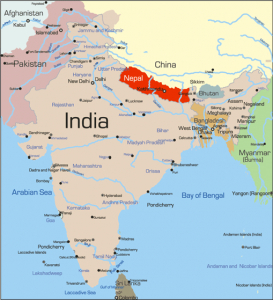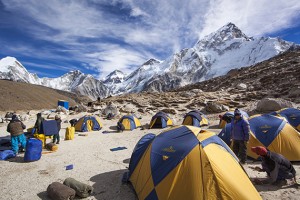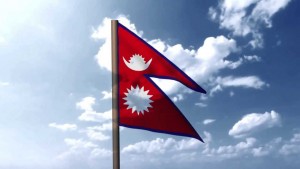We have all heard of Child Labour before right, but do you know that it still exists today. A number of countries still have Child Labour, but my presentation will be on the country Nepal. Nepal is located in the southern part of Asia, and it is neighboured by China, Tibet, and India. Most people know it because the base camp of Mount. Everest is located in Nepal.
We should learn more on Nepal before we go through with the child labour.
- Nepal’s Currency is a Nepalese Rupee
- The Capital of Nepal is Kathmandu
- The Population of Nepal from 2011 – 2015 is 28,174,724 people
- The most popular religion is Hindu with 81% of the population
- The Quote of the Country is “Mother and Motherland are Greater Than Heaven”
- Nepal’s flag is the only non-quadrilateral flag with two pennons coloured red, that is bordered in blue, and has a sun and crescent moon inside
Now that we know a little bit of Nepal, we are going to move on to the child labour in this country. Nepal is one of the countries in Southern Asia that uses the most child labour. 34% of Child labour in Nepal is from the ages 5-14 which is just 12% of the whole South Asia region. 60.5% of children work for 19 hours in a week, 32.2% worked for 20-40 hours a week, and 7.3% work for more than 40 hours a week. Child labour occurs in 4 different types.
- Agriculture
- Industry
- Services
- The worst forms of child labour
In Agriculture
- they Herd the cattle
- farm rice
- activities that are unknown
In Industry
- they work in brick kilns
- mining and stone breaking
- construction
- carpet weaving
- producing embroidered textiles
In Services
- they do domestic service
- transportation
- working in restaurants
- tea shops
- portering
- rag-picking
- recycling
The worst forms of child labour
- commercial sexual exploitation as well as human trafficking
- working with leather
- garments
- domestic service
- begging
- circuses which also includes human trafficking
- forced labour
- bonded labour
- agriculture
- brick manufacturing
- stone breaking
- carpet weaving
- embroidery of textiles
- begging
In this presentation we will be paying attention on brick manufacturing.
For Brick Manufacturing I’ll be talking about genders, age, hours, wages, education, safety risks, living conditions, and how people are trying to stop it.
In a Brick kiln,
- Both genders work, but most girls are put into child labour instead of boys.
- The ages of the Children are from 5-16 years old, whom carry and told bricks starting as early as 2 a.m. and finishing there daily routine around 8 p.m.
Hours
- 60.5% of children work for 19 hours in a week, 32.2% worked for 20-40 hours a week. 7.3% work for more than 40 hours a week because they come from impoverished families.
Money
- Some Children that go in labour for money that gets paid right away or earn the money throughout the year and bring it back to their village.
- For money right away 20% were given 1,500 Nepalese Rupees (A.K.A. NPR), thats 20 dollars Canadian (A.K.A. CDN), 30% were given 1,500 – 2,000 NPR or 26 CDN, 23% were given 2,500-5,000 NPR or 33 CDN and 67 CDN, and 17% were given more than 5000 NPR or 67 CDN+, But most of them who work through the day get 8 dollars.
Education
- The education for the kids in brick kilns are provided by non-formal education (NFE) classes that are offered free. One centre opens up from 2-4 p.m. from Sunday to Friday.
- They are provided with basic education.
Conditions/Safety risks
- There are a ton of safety risks at the kiln.
- Most kids that took surveys said they got more injuries in their legs, arms, hands, and feet then other parts of their bodies.
- After long days of work, teens girls received work related pains.
- There is other risks such as sun exposure, clay dust, dust, sand, fumes, and bricks being held on head. The living conditions aren’t good as they are brick houses.
- They sleep in the house where they also make food and rest.
- Their houses aren’t baked bricks they are sun dried.
Now how are people trying to stop it?
- Since the brick industry is blowing up they are trying to find alternative ways to make the bricks in factories instead of manual labour.
- They are also trying to find other ways other than traditional ways.
Comparison to Industrial Revolution:
- They worked for long hard hours in factories.
- They had bad Working conditions
- Few educated Children worked
- They were exposed to the pollution
- Workers were forced to work overtime
- Wages were low
- Take part of their wages in food
- Both Genders worked
Ways to stop Child labour is set up a village where children can attend school and choose to work, or try to get the kids away from the kilns and bring them somewhere else. Another way of stoping Child labour is getting awareness about what is going on in some of these countries that have child labour and even donating some money to a foundation that helps with child labour.
Thanks for looking at this presentation
Citations:
Child Labour at a Brick Kiln in Sonitpur District. Dir. Faltu Kumar. Faltu Kumar, 2014. Film.
https://upload.wikimedia.org/wikipedia/commons/3/36/Child_labour_Nepal.jpg
http://www.rei.com/graphics/adventures/photos/ebc_07.jpg
https://i.ytimg.com/vi/_-ERZBVYd90/maxresdefault.jpg
 of Child Labor.” Dol.gov. Web. 16 Jan. 2016. <http://www.dol.gov/ilab/reports/child-labor/nepal.htm#_ENREF_1>.
of Child Labor.” Dol.gov. Web. 16 Jan. 2016. <http://www.dol.gov/ilab/reports/child-labor/nepal.htm#_ENREF_1>. Nepal_2010.pdf>.
Nepal_2010.pdf>. Cranny, Michael. “The Triumph of Steam.” Crossroads a Meeting of Nations. Scarborough: Prentice Hall Ginn Canada, 1998. Pp. 123-158. Print.
http://www1.rfi.fr/actuen/images/117/CatalanoGonzaga6.jpg
http://www.welnepal.org/images/home/nepalMap_India.png



